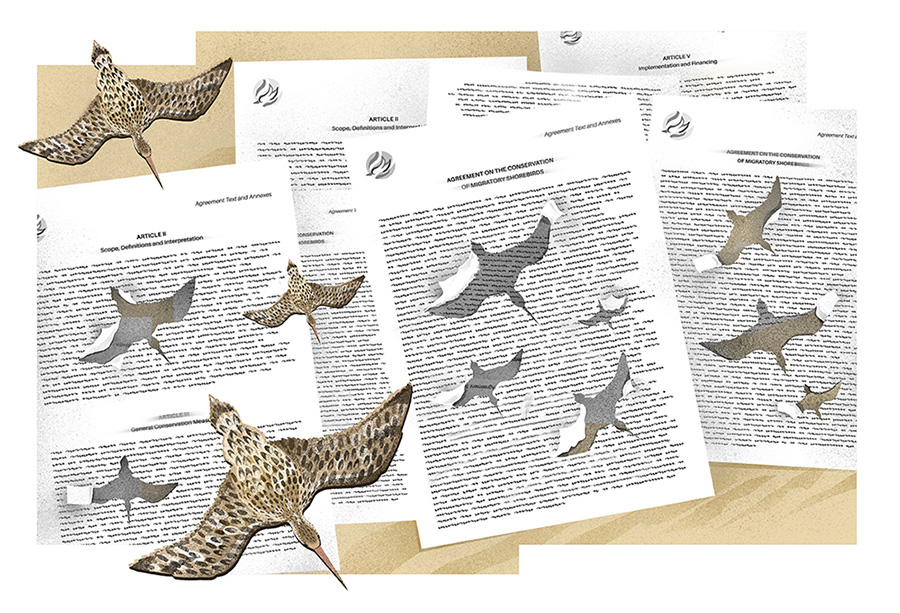Unlimited economic growth, necessary to sustain present-day capitalist societies, requires continued and ever-increasing consumption of materials and energy. This economic growth (which we will hereafter refer to as ‘growth’) has profoundly transformed a large portion of Earth and negatively impacted biodiversity. The expansion of intensive agriculture, forestry, fisheries, aquaculture, industry, urbanization, and transport are some of the economic activities that are currently altering most of our ecosystems. We reviewed sustainability literature and some of the most important biodiversity agreements, such as the Strategic Plans for Biodiversity, to describe the current nature of the relationship between growth and biodiversity. Our paper also offers potential solutions to current social and ecological problems, built around the idea of sustainable degrowth.
Historically, much of sustainability literature has considered growth to be essential for protection of biodiversity. Growth is said to increase profits for capital by promoting technological efficiency, while reducing the use of materials, energy, and greenhouse gas emissions. Therefore, those in favour of it suggest that decoupling growth from environmental degradation and biodiversity loss is possible. However, a body of emerging evidence demonstrates devastating impacts on biodiversity caused by resource extraction associated with growth. Despite this evidence, even the most recent sustainable development ideas still suggest that continued economic expansion is compatible with planetary boundaries and argue for the pursuit of conservation through continued growth. One of those ideas can be found in the EU proposal for a “Green New Deal” encouraging “technological green growth” to fight climate change. Growth is also advocated in the recent and most influential international policy documents and agreements on sustainability and biodiversity, such as the 2030 Agenda for Sustainable Development and the post-2020 Global Biodiversity Framework.
Today’s conservation policies are almost exclusively based on economic principles, including sustainable use of biodiversity, ecosystem service maintenance, economic value of natural capital and nature’s role in supporting economic activity. With future international programs for biodiversity conservation to be negotiated, it is paramount to revisit the global biodiversity agenda and improve its effectiveness. Much of the planned focus for biodiversity protection is centred around area-based conservation measures and the amount of land and sea that needs to be set aside from production. Such conservation measures go from the Nature Needs Half and the Half-Earth proposals, aimed to conserve half of the planet, to the Whole Earth plan, a more holistic initiative suggesting moving away from growth-oriented strategies. These differing alternatives are currently causing heated debates and rifts between conventional, growth-focused conservationists and the emerging ones, aiming to divorce conservation from capitalism.
It is evident that capitalism is incompatible with biodiversity protection and that current growth-driven conservation programs are highly ineffective for protecting biodiversity. More effective biodiversity conservation can be achieved through a global sustainable degrowth strategy, by reducing exploitation of resources and environmental degradation. Sustainable degrowth should be promoted through socially-responsible and environmentally-friendly practices, reduction and removal of the existing harmful activities and promotion of new sustainable, growth-free and shared prosperity goals without growth. For example, and more specifically, a sustainable degrowth strategy should focus on developing a just energy transition and reducing waste by reusing and recycling the product components, promoting agroecology and improving health and education services. Ultimately, for a more inclusive, safe, and just society, introduction of different goals into the current conservation agenda is timely and crucial.
We strongly believe that a global sustainable degrowth strategy would effectively halt biodiversity loss and enhance ecological conditions, while improving human well-being. Sustainable degrowth would also help us adapt to a future with fewer resources and increasing social conflicts. It is time to transcend capitalism and find other ways of social organisation and development that are ecologically and socially healthier. A good example of a socially desirable organisation, while on a small scale, comes from the Kichwa people of Sarayaku in Ecuador, living in harmony with the natural world of the Amazonian rainforest. It is unlikely that urban societies could ever achieve the same level of unity with nature as an Amazonian tribe, but if we do not strive towards it, environmental destruction and biodiversity loss will soon become irreversible.
Further Reading
Moranta, J., C. Torres, I. Murray, M. Hidalgo, H. Hilmar, A. Gouraguine. 2021. Transcending capitalism growth strategies for biodiversity conservation. Conservation biology. doi: https://doi.org/10.1111/cobi.13821
Torres, C., J. Moranta and I. Murray. 2022. The construction of a growth-oriented global climate agenda: a critical historical analysis. Investigaciones Geográficas, 77:161-180. https://doi.org/10.14198/INGEO.19351.
Büscher, B. and R. Fletcher. 2020. The Conservation Revolution: Radical Ideas for Saving Nature beyond the Anthropocene. Verso, London. https://www.versobooks.com/books/3149-the-conservation-revolution.
Otero, I., K. N. Farrell, S. Pueyo, G. Kallis, L. Kehoe, H. Haberl, C. Plutzar et al. 2020. Biodiversity policy beyond economic growth. Conservation Letters, 13: e12713. (Volume number also omitted). https://doi.org/10.1111/conl.12713
Photograph: https://pxhere.com/






